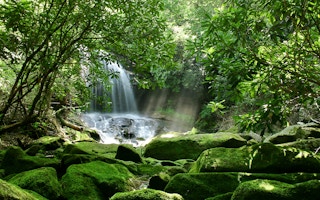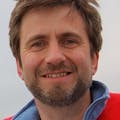Take an apple out of the fridge and look at the almost invisible film of moisture that forms on its surface. If the earth were the apple, the moisture would represent its “critical zone”, the thin and fragile layer – encompassing everything from rock to soil, rivers to air – that supports life on the planet.
Safeguarding this critical zone was the focus of a recent meeting in Beijing, where the National Science Foundation of China met with their counterparts in the US, UK, France and Germany. The aim was to develop an Apollo-scale programme to tackle the resource constraints that threaten to undermine global economic development.
Like the Apollo programme, the challenges are clear. We have about 10 years to identify solutions for basic human needs such as energy, food and water, and to mitigate the risks associated with climate change and further degradation of natural resources. We have 10 years because many solutions will take at least a decade to take effect, and because we have only 20 years before the perfect storm of food, water and energy shortages makes landfall.
Without a coordinated global effort, it is hard to be optimistic about the prospects for international security, economic stability and human well-being.
Managing the interconnected insecurity of water, food and energy requires a new approach, and this requires joint efforts across an extraordinary breadth of expertise. This new science will pull in the best of businesses and governments to deliver coordinated solutions around the world. Scientists are good at innovating, businesses are good at pragmatism and delivering on time, and global governance is required to create the appropriate environment for change wherever it is needed. Working together is essential if we are to implement real solutions in time.
We still lack the ability to see the critical zone in its entirety. We cannot measure the flows of life-sustaining resources – such as food, energy and water – with enough confidence to know how best to protect them. We have computer models of river flows, plant growth and some soil processes, but we cannot predict the behaviour of the system as a whole. The critical zone programme aims to develop and apply the technologies to envision this system, to make forecasts and identify ways to intervene.
“
We have 10 years because many solutions will take at least a decade to take effect, and because we have only 20 years before the perfect storm of food, water and energy shortages makes landfall.
John Crawford, scientific director, Sustainable Systems Programme, Rothamsted Research
The first step must be to create a theory. This would literally be a map of all of the processes and interactions that matter for sustaining life, including the flow of energy, nutrients and water in the landscape; competition between animals, plant and humans for these resources; losses in the form of greenhouse gas emissions to the atmosphere; the role of soil in recycling nutrients; and the feedbacks between life and the physical environment including climate regulation and environmental engineering.
With such a map, scientists, businesses and decision-makers from all backgrounds can navigate and talk together. Each can see how their contributions and needs fit with those of others as the picture evolves.
Underpinning this map is a set of equations that allow us to go from an abstract static picture to predictions of how the system changes and why it matters. The language of mathematics is an international language that avoids the ambiguities often encountered when cultures collide.
Developing the theory should go hand-in-hand with establishing a worldwide network of critical zone observatories. These sites will measure the flows and reservoirs of water, nutrients and gases, as well as the consequences for the associated living systems. A number of these already exist and the programme will build on the successes of these and ensure the effective sharing of knowledge, technology development and analytical techniques as the network rolls out globally.
This is indeed one of the most challenging scientific programmes ever proposed and it will require significant funds in a time of financial stress. But with the will of governments and their citizens – and the engagement of the international business community – it is achievable.
In his most famous speech, delivered 53 years ago, John F. Kennedy called on US science and industry to work together to put men on the moon in a decade, and convinced the American that they should pay for it. The reason for conquest of space was national security, but the reason for the moon was threefold: because it was hard, because it would “serve to organize and measure the best of our energies and skills”, and because the challenge was “one we are unwilling to postpone”. The words are more relevant now than ever, and we may be about to see the global leadership we need to get started.
John Crawford is Scientific Director of the Sustainable Systems Programme at Rothamsted Research. This post originally appeared on the World Economic Forum blog.


















